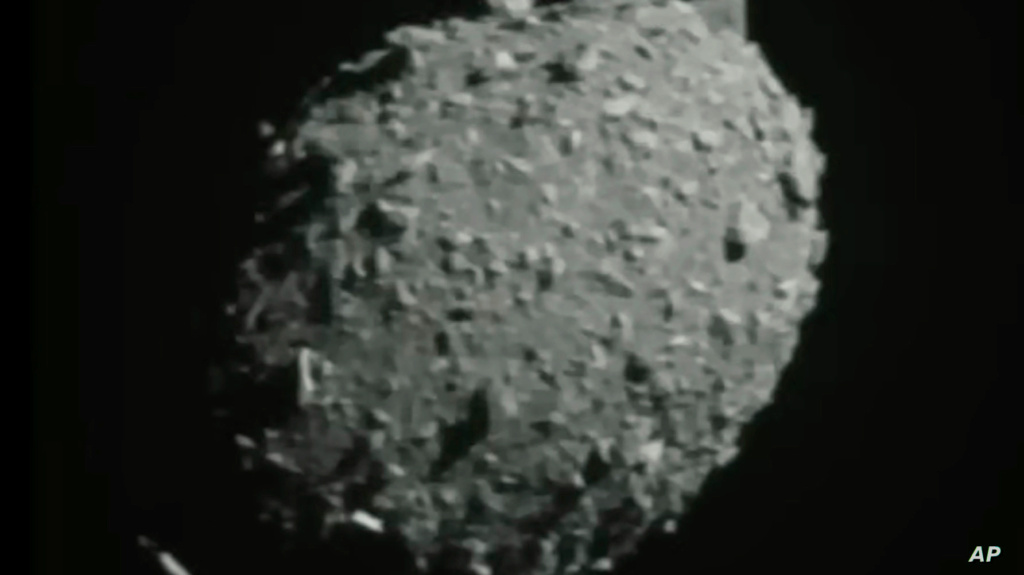In a historical test of the human ability to prevent a celestial body from destroying the Earth... "NASA" succeeds in diverting the course of the asteroid "Demorofos"

The US space agency "NASA" has confirmed its success in diverting an asteroid, in a historic test of humanity's ability to prevent a celestial body from destroying life on Earth. Very few of the billions of asteroids and comets in the Earth's solar system are considered a threat to our planet, and none of them will be in the next 100 years.
In a historic test of humanity's ability to protect life on Earth from celestial bodies, the US space agency "NASA" announced that it had succeeded in diverting an asteroid's path away from the inhabited planet.
NASA Administrator Bill Nelson said the refrigerator-sized Asteroid Redirection Test (DART) vehicle deliberately collided with the asteroid Demorphos on September 26 and pushed it into a smaller and faster orbit around another larger asteroid called Didymos.
"This is a defining moment in the defense of the planet and a defining moment for humanity," Nelson stressed, stressing that NASA "has proven that we are serious in defending the Earth."
Nelson explained that the double asteroid reorientation test "shortened the orbital period from 11 hours 55 minutes to 11 hours and 23 minutes."
Demorphos needed 11 hours and 55 minutes to make a full circle around Didymus.
He added, "But we considered that we had achieved a great success if the spacecraft was satisfied with reducing the orbital period by about ten minutes, but it reduced it by 32 minutes."
Nelson went on to say, "This is like a movie scenario, but we're not in Hollywood (...) This mission shows that NASA is trying to be ready for anything the universe might send us."
If its goal is modest compared to the scenarios of a number of science fiction films such as "Armageden", this unprecedented test mission inaugurates the era of training in how humanity will defend itself if an asteroid threatens life on Earth in the future.
Demorphos, which is about 160 meters in diameter, poses no threat to Earth.
Very few of the billions of asteroids and comets in the Earth's solar system are considered a threat to our planet, and none of them will be in the next 100 years.

Minute follow up
To verify that the asteroid's path had been modified, scientists needed to analyze data provided by telescopes on Earth. These telescopes observed a change in the asteroid's flash when it passed in front of and behind the larger asteroid.
Immediately after the collision, the first images taken by telescopes on the ground and the nano-satellite in the craft showed a large cloud of dust around Demorphos that extends over thousands of kilometers.
After that, the two most powerful telescopes, James Webb and Hubble, for observing space, revealed detailed footage, especially showing the movement of material that separated from the asteroid.
The spacecraft has traveled for ten months since it took off from California and until it hit the asteroid.
The European Hera probe, scheduled to launch in 2024, will monitor Demorphos closely in 2026 to assess the consequences of the collision and calculate the mass of the asteroid for the first time.
So far, about 30,000 asteroids of all sizes have been observed near Earth (they are called near-Earth objects, meaning that their orbit intersects with the orbit of the planet humans). And finds about three thousand new species every year.
Source: websites

